
珊瑚の宝石:意味、特性、価値、情報
 サンゴは、鮮やかなピンク、赤、オレンジ色を帯びることが多い有機物です。では、サンゴは宝石なのでしょうか?答えは「宝石」です!サンゴは真珠や琥珀のように有機的な宝石であり、地質学的プロセスではなく、生物の力によって形成されたと言えるでしょう。
サンゴは、鮮やかなピンク、赤、オレンジ色を帯びることが多い有機物です。では、サンゴは宝石なのでしょうか?答えは「宝石」です!サンゴは真珠や琥珀のように有機的な宝石であり、地質学的プロセスではなく、生物の力によって形成されたと言えるでしょう。
生物学的には、「サンゴ」は海生動物(サンゴポリプ)と、それらが分泌する硬い外骨格の両方を指します。生物学以外では、「サンゴ」は、その生物にちなんで名付けられたピンクオレンジ色、そしてもちろんサンゴの宝石を指すこともあります。
これらの宝石は歴史上最も古いものの一つであり、その使用は先史時代にまで遡ります。宝飾品や装飾品に使用されるサンゴのほとんどは「宝石サンゴ」と呼ばれます。
このガイドでは、サンゴの宝石の色、用途、価格など、サンゴの宝石に関する秘密の海をお教えします。
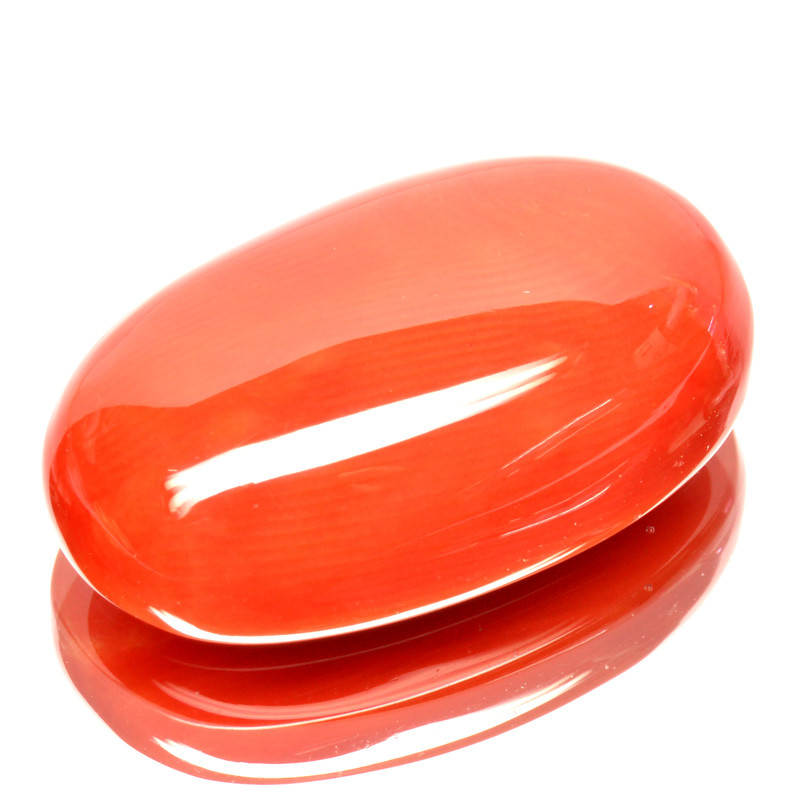
コーラルストーンとは?
「宝石珊瑚」という名前が付いていますが、装飾品として使われる珊瑚は半貴石です。「赤珊瑚」という名前もよく目にしますが、赤珊瑚とは何でしょうか?
赤珊瑚は宝石珊瑚と同義で、どちらもサンゴ科の種を指し、その耐久性と鮮やかな色彩が特徴です。名前として使われる赤珊瑚の色は、実際には赤、ピンク、オレンジ、またはそれらの混合色です。
占星術では、珊瑚は牡羊座の星座石です。ヒンドゥー占星術では、赤珊瑚(ムーンガ)は火星の星座石であり、チャートにおける火星のネガティブな配置の影響を和らげると言われています。
より柔らかい側面では、珊瑚も結婚35周年の伝統的な宝石です。
サンゴの仕様と特徴
まず、サンゴは鉱物でしょうか?いいえ、サンゴは鉱物の一種ですが、多くのサンゴは主に方解石とアラゴナイト(炭酸カルシウムの一種)といった鉱物で構成されています。
サンゴの外骨格は、炭酸カルシウムから成り、骨針と呼ばれる棘状の組織が網目状に絡み合った構造をしています。水中のカロテノイド色素がサンゴを赤色に染めています。
サンゴポリプの木のような枝は、最初はマット(鈍い)ですが、磨くとワックス状またはガラスのような光沢が出ます。
本物のサンゴの特徴を以下でご覧ください。
モース硬度:3~4
色: 白、赤、ピンク、オレンジ、または混合色(石灰質)、黒、青、金色、または茶色(コンキオリン)
結晶構造:なし
光沢:鈍い、蝋のような、またはガラスのような光沢
透明度:半透明から不透明
屈折率:1.48~1.56(石灰質);1.56~1.65(コンキオリン)
密度:2.6~2.7(石灰質);1.30~1.35(コンキオリン)
胸の谷間:なし
骨折:破片状または不均一
縞模様:白
発光: SW-UV および LW-UV で蛍光を発することがある。白サンゴ - ライトブルー。赤、オレンジ、ピンクのサンゴ - オレンジまたはピンクオレンジ。暗赤色のサンゴ - 赤またはバーガンディ。
上記のリストにある石灰質およびコンキオリンの仕様に気づいた方は、次にそれらについて説明します。
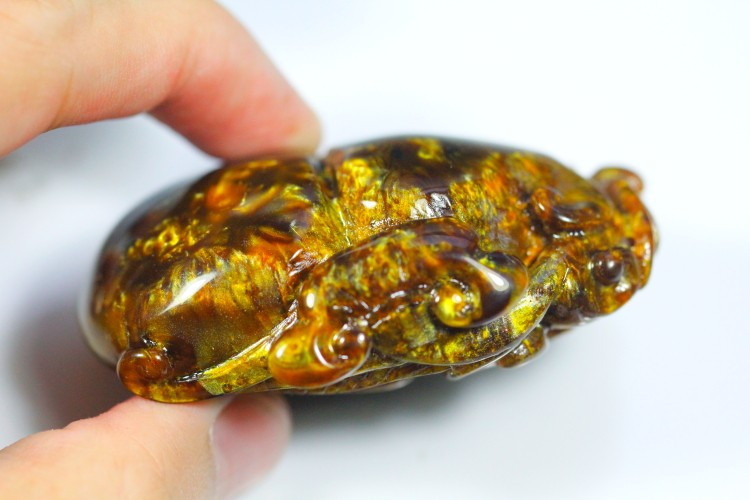 画像: 金色に染められ彫刻された黒色のコンキオリン珊瑚
画像: 金色に染められ彫刻された黒色のコンキオリン珊瑚
サンゴの種類
サンゴの種類には数百種類ありますが、宝石として利用されるのはごく一部です。宝石用サンゴの種類は、石灰質サンゴとコンキオリンサンゴの2種類に分けられます。
石灰質サンゴ、いわゆる「普通サンゴ」の多くは、赤、白、ピンクなどの色合いをしています。主に炭酸カルシウムでできており、ワックス状の構造には繊維が詰まっており、ポリプのための空洞も存在します。
石灰質のカテゴリーには、宝飾品としてよく見られる赤珊瑚(宝石珊瑚)の一種であるCorallium rubrumやCorallium japonicumが含まれます。
コンキオリンサンゴ、またはタンパク質性サンゴは、より希少な黒、金、茶色の色合いを持つ、2番目のサンゴ群です。これらのサンゴは、鉱物ではなく、コンキオリンと呼ばれる複雑な有機タンパク質で構成されています。
これらのサンゴは、木の年輪のような円形の模様と、枝分かれ部分に白い半円模様があります。コンキオリンには、青い骨格を持つ珍しい青サンゴも含まれています。
石灰質サンゴと比較すると、コンキオリンサンゴはより耐久性がありますが、より希少で鮮やかさも劣ります。
古代の人々はサンゴの亜種をすべて知っていたわけではありませんが、サンゴに無数の意味と力を与えていました。
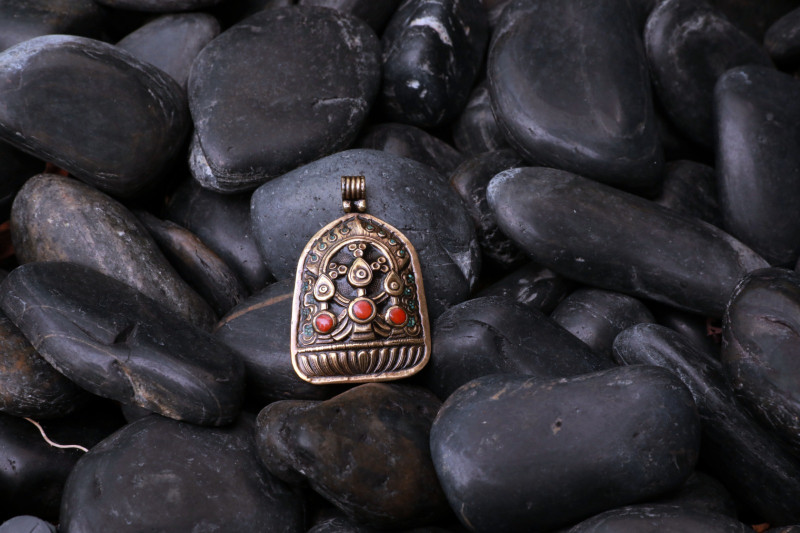 画像: 珊瑚石をあしらったチベットの真鍮ペンダント
画像: 珊瑚石をあしらったチベットの真鍮ペンダント
珊瑚石の意味と歴史
今日、赤珊瑚は喜び、謙虚さ、そして知恵を象徴しています。しかし、歴史を通して、様々なグループが珊瑚に神聖な意味と起源を与えてきました。
神話と伝説
古代ギリシャ人は、サンゴの起源をペルセウス神話に記しています。オウィディウスの『変身物語』によると、半神ペルセウスは海の怪物ケートスを倒した後、川岸で療養していました。
ゴルゴン・メデューサを倒して首をはねた後、彼は彼女の頭を少しの間下げました。その時、メデューサの血が近くの海藻(あるいは葦)を赤く染めました。これがギリシャ語でサンゴを意味する「ゴルゲイア」 (ゴルゴンにちなんで)の由来となりました。
古代ローマ人は、サンゴを病気の診断、中毒治療、そして子供の安全のために使用しました。ハワイの先住民は、口内炎や肺疾患の治療に天然の黒サンゴを使用していました。
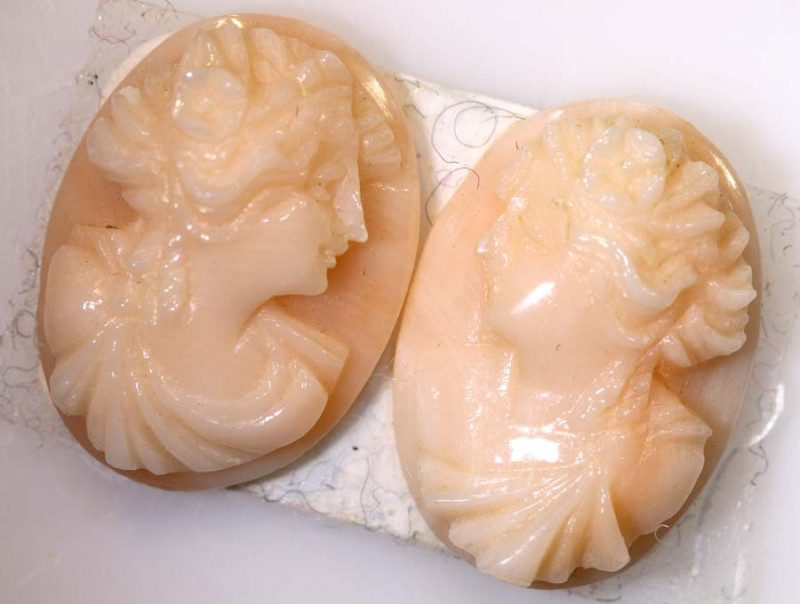
歴史
「サンゴ」という言葉は、ヘブライ語の「ゴラル」またはアラビア語の「アラル」に由来すると考えられています。どちらも「小さな石」を意味する動物です。ほとんどの古代の記録や遺物には、地中海産のサンゴについて言及されています。
考古学の発掘調査により、世界中に散らばる古代の珊瑚の工芸品の中に、先史時代にまで遡る珊瑚の宝飾品がヨーロッパで発見された。
サンゴに関する最も古い文献は、紀元前315年に古代ギリシャの学者テオプラストスが著した『石材について』に記されています。赤や白のサンゴを使った宝飾品や装飾品は、古代ギリシャ人、ネイティブアメリカン、ローマ人、エジプト人の間で一般的でした。
古代には、建築資材や栄養補助食品としての利用もありました。内陸国の人々は、珊瑚の宝石と物々交換を頻繁に行っていました。ローマの博物学者、大プリニウスは、紀元1年という早い時期に珊瑚の交易ルートを詳細に記録しています。
イスラム教、キリスト教、ユダヤ教、仏教、ヒンドゥー教など、宗教の聖典や芸術では、赤珊瑚は神聖なものとして描かれています。西アフリカのビニ族とヨルバ族の指導者たちは、自らの地位を示すために赤珊瑚の宝飾品を用いています。
1700年代から1800年代にかけて、サンゴはヨーロッパで人気を博しました。1800年代以降、科学者たちは1970年代という近年に至るまで、様々なサンゴの種を発見し続けています。
現代において、サンゴにはどんな治癒力があるのでしょうか?

サンゴの治癒効果
サンゴのような有機質の石は、他の水晶よりも強力なヒーリングストーンであると考える人もいますが、多くの特性が重複しています。白珊瑚の宝石は、白水晶と同様の浄化作用と変容作用を持っています。
同様に、貴重な珊瑚のような赤い宝石は自信と勇気のエネルギーを呼び起こすので、仙骨チャクラに最適なチャクラ石になります。
サンゴ宝石の身体的、感情的な効能についてはどう思いますか?
身体の治癒
身体的には、サンゴは次のような症状を治療すると言われています。
皮膚の問題(ニキビ、嚢胞など)
心臓病
血行不良
無気力
栄養不足
サンゴを身につけると怪我から守られると信じる人もいます。
感情的な癒し
不安や焦燥感、あるいは自信のなさを感じることがよくあるでしょうか?コーラルは勇気と自信を高め、あなたを助けてくれるでしょう!さらに、心の平安をもたらし、ロマンスを引き寄せ、心に溜まった恨みや罪悪感を解き放つ力があると信じられています。
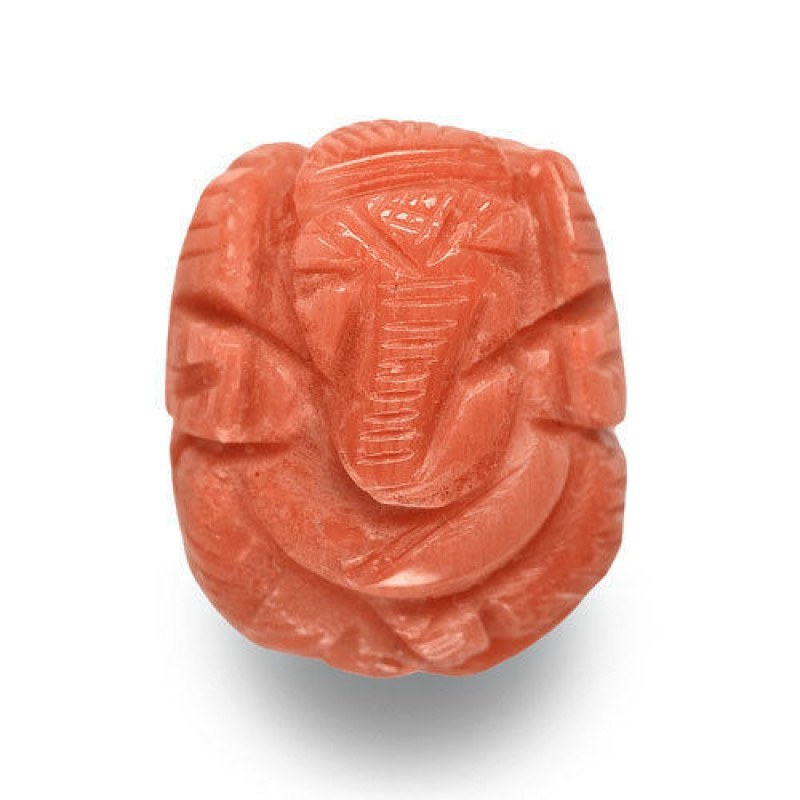
サンゴ宝石の特性
サンゴの客観的な価値は、希少性や年代など、多くの要素によって決まります。ここでは、色、カット、サイズ、そして加工処理を主な特徴として取り上げます。
色
自然界では白色が最も一般的ですが、ジュエリーに使われる珊瑚の色は、一般的にピンク、赤、オレンジ色です。しかし、染色することで、ほぼあらゆる色に染めることができます。その他の天然珊瑚の色は、青、茶、黄色で、まれに黒や金色もあります。天然の色は、鉱物の酸化の程度の違いによって生じます。
色彩的に言えば、石灰質サンゴの中で最も価値が高いのは赤またはピンクです。オレンジ色の色合いは価値をわずかに下げることがあります。コンキオリンサンゴの場合、黒、茶、金色の色合いが最も価値があります。
何世紀にもわたって地中海で採取されてきたサンゴ(Corallium rubrum)は、淡い桃色のピンクから最も高価な色合いである赤褐色まで、標準的な色の範囲を持っています。
ハワイ産の金珊瑚は、現在は採掘されていませんが、最も希少な色をしています。色合いは様々で(黄褐色から黒に近い色まで)、黒珊瑚やピンク珊瑚よりも模様が豊かです。
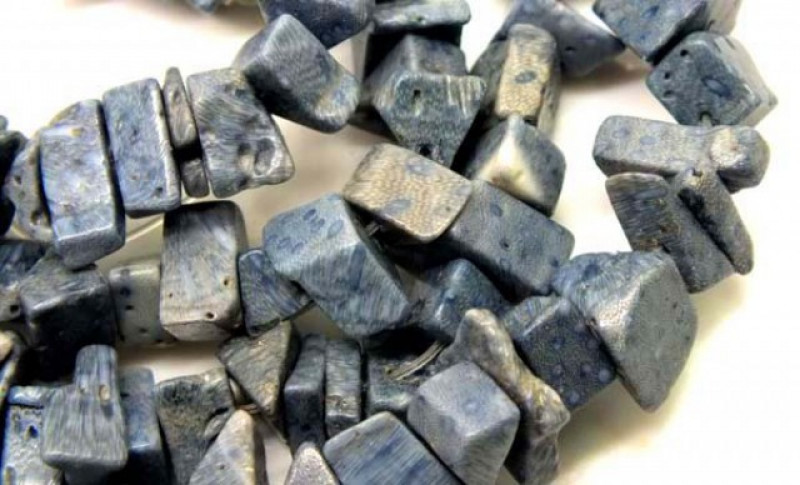
カット
ほとんどの珊瑚はカボション、ビーズ、または彫刻になります。 ファセットカットは稀です。最高級のビーズは均一な色合いをしています。彫刻の価値は職人の技量によって異なります。小さな彫刻はイヤリングやピンバッジとして人気があります。原石の珊瑚はペンダントに加工されることもあります。
サイズ
大きくて高品質な珊瑚宝石は希少価値が高く、より高価です。彫刻家は低品質の原石に手を加えて欠陥を隠すことができるため、大きな彫刻作品の中にはより手頃な価格で入手できるものもあります。
トリートメントと合成
サンゴの一般的な処理には、染色、漂白、表面コーティング、含浸処理などがあります。サンゴは多孔質であるため、染料をよく吸収します。通常、淡色または白色のサンゴは赤やピンクに染められます。漂白は、黒サンゴを金色のサンゴに変える際によく行われます。
宝石職人は、ひび割れを埋めたり、石の外側をより硬くしたりして耐久性を向上させるために、表面コーティングや含浸処理を行います。
合成サンゴは1970年代に誕生しました。ピエール・ギルソンは方解石とシリカを圧力と熱で加工し、サンゴの代替品を作りました。繊維状の構造とポリプの空洞が見られない場合、合成サンゴだと分かります。

サンゴの形成と起源
サンゴは5億3500万年前のカンブリア紀から存在しています。最も古いサンゴ石の中には、火山活動や地震によって山脈の高い位置まで押し上げられたサンゴの化石があります。化石化したサンゴの一部は瑪瑙に置き換わっており、瑪瑙化サンゴと呼ばれることがあります。
この動物は最初は浮遊性の幼生として生まれます。幼生は水中の岩に、特に海岸付近に張り付いています。仲間として、幼生は炭酸カルシウムを分泌し、他の幼生が定着できる堅固な構造物を形成します。コロニーはゆっくりと繁殖し、サンゴ礁を形成します。
ダイバーは、ほとんどのサンゴを少なくとも20℃(68℉)以上の浅い熱帯から亜熱帯の海域で見つけます。しかし、より深く冷たい海域にもサンゴ礁が存在します。
それを念頭に置いて、サンゴはどこから来るのでしょうか?
収穫場所
珊瑚宝石のほとんどは紅海と地中海から産出されます。インドネシア産の珊瑚は、最も美しい模様を呈することで知られています。
赤珊瑚はどこから産出されるのでしょうか?最高品質の赤珊瑚は地中海産です。これらの石のほとんどは、イタリアと香港の石工によってカットされています。南シナ海産の珊瑚(黒血珊瑚を含む)のほとんどは、台湾と中国の石工によって加工されています。
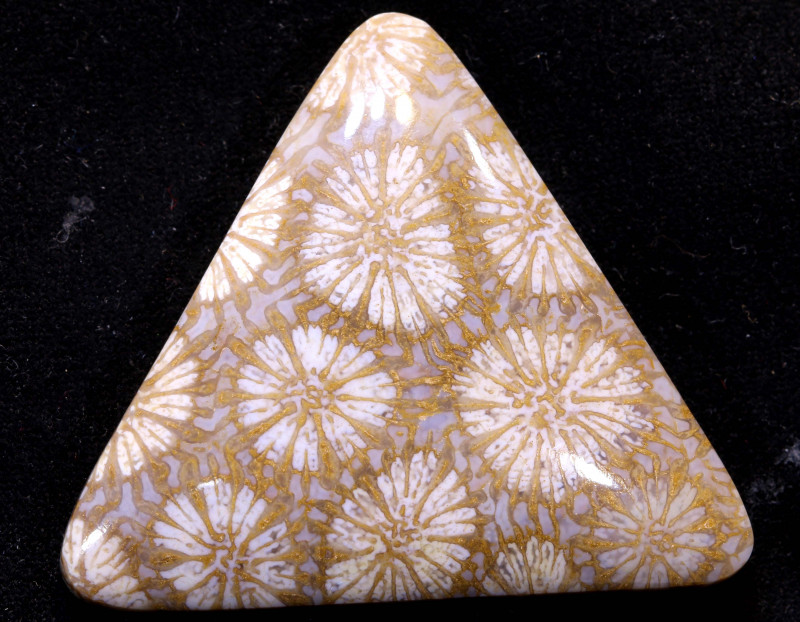
海の外では、化石サンゴ(上の画像)はインドネシア産として有名で、バリサン山脈の高地で発見されています。化石サンゴの主要産地は、アメリカ合衆国フロリダ州とジョージア州のみです。
宝石品質のサンゴの他の主な産地は以下の海岸です。
オーストラリア
カメルーン
ハワイ、米国
日本
マレーシア
モーリシャス
モロッコ
フィリピン
南アフリカ
スペイン
台湾
さて、サンゴは高価なのでしょうか?高価な場合もありますが、品質と産地によって異なります。

サンゴの価格と価値
赤珊瑚の価値はどれくらいでしょうか?現在、中国からの需要が高いため、価格は高騰しています。現在の赤珊瑚の平均価格は1カラットあたり200ドルですが、品質によっては1カラットあたり10ドルから250ドル程度の範囲になります。
傷のない2カラット未満の赤珊瑚は、平均1カラットあたり100ドルです。2カラットから3カラットの同じ珊瑚は、平均200ドルです。
もちろん、卸売価格の方がお手頃です。赤珊瑚のカボションは1カラットあたり20~90ドル、オレンジのカボションは1カラットあたり5~40ドル、白のカボションは1カラットあたり0.20~3ドルです。
イタリア産の珊瑚彫刻は1カラットあたり約13~38ドル、日本製の珊瑚彫刻は1カラットあたり約15~35ドルです。その他の珊瑚彫刻は、色や職人の技量によって1カラットあたり3~60ドルの範囲です。
最後に、サンゴ原石の小枝は 1 本あたりわずか 10 ~ 20 ドルです。
サンゴのケアとメンテナンス
サンゴのような有機宝石は、適切なケアが不可欠です。これらの石は光や熱に長時間さらされると敏感です。さらに、青サンゴや染色サンゴは日光にさらされると色が薄くなります。
多くのサンゴは多孔質なので、プールや化学薬品(ヘアケア製品や化粧品を含む)から遠ざけてください。特にアンモニアはサンゴの光沢を損ないます。
サンゴは乾いた柔らかい布で拭いてください。ぬるま湯でさっとすすいでもいいですが、その後はすぐに乾かしてください。サンゴは柔らかいポーチに入れて、冷暗所で保管してください。

Coral Gems があれば、世界はあなたのものになります!
海が好きでも、歴史が好きでも、美しい宝石が好きでも、サンゴにはそのすべてが詰まっています。この美しい宝石は、サンゴ礁が何百もの生き物にそうしているように、あなたの心を高揚させ、地に足をつけさせてくれます。さらに、サンゴは自然の美しさを思い出させてくれます。
オーストリアの小説家ジョセフ・ロスの言葉を引用すると、「富める者も貧しい者も、誰もが珊瑚を身に着け、下にいる者を高め、上にいる者を飾る。」
ゴージャスなジュエリーで注目を集めたいと思いませんか?珊瑚の宝石を今すぐご購入ください!
Gemstone Encyclopedia検索
最新記事
ヤシ象牙彫刻は、植物象牙とも呼ばれ、南米のヤシ科植物フィテレファス属のヤシの実から倫理的に採取された、象牙の天然代替品です。このガイドでヤシ象牙についてすべて学びましょう!
15th Jan 2026
レインボーラティスサンストーンは、様々な内包物によって3つのゴージャスな光学的効果を持つ長石の一種です。燃えるように鮮やかな色合いと格子模様が、コレクターにとって希少な宝石となっています。
12th Jan 2026
記事のカテゴリ
How To's is where you will find helpful articles from gem Rock Auctions on how to cut gemstones, select gemstones and buy gemstones.
9記事数

